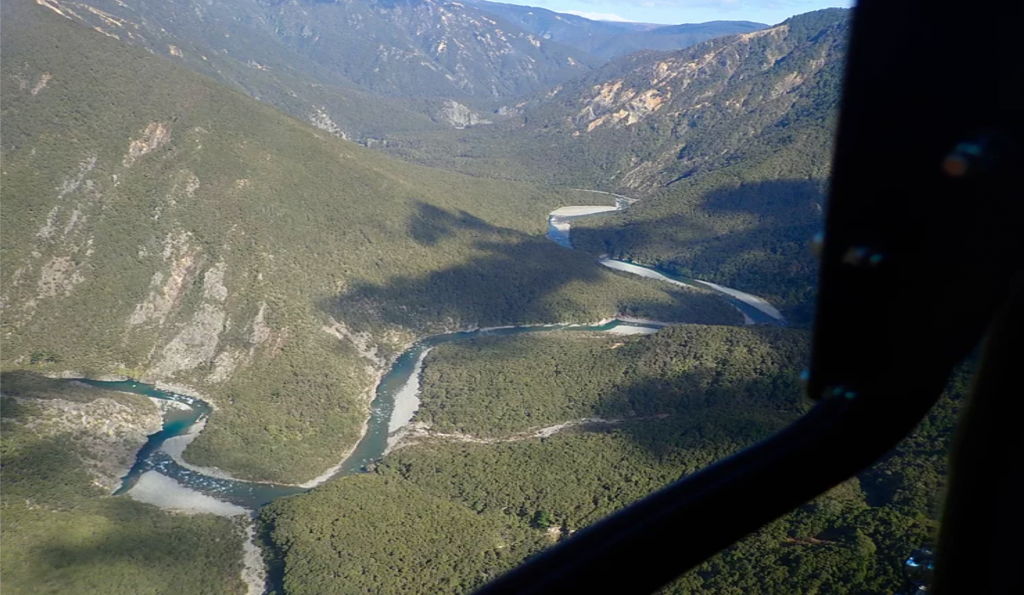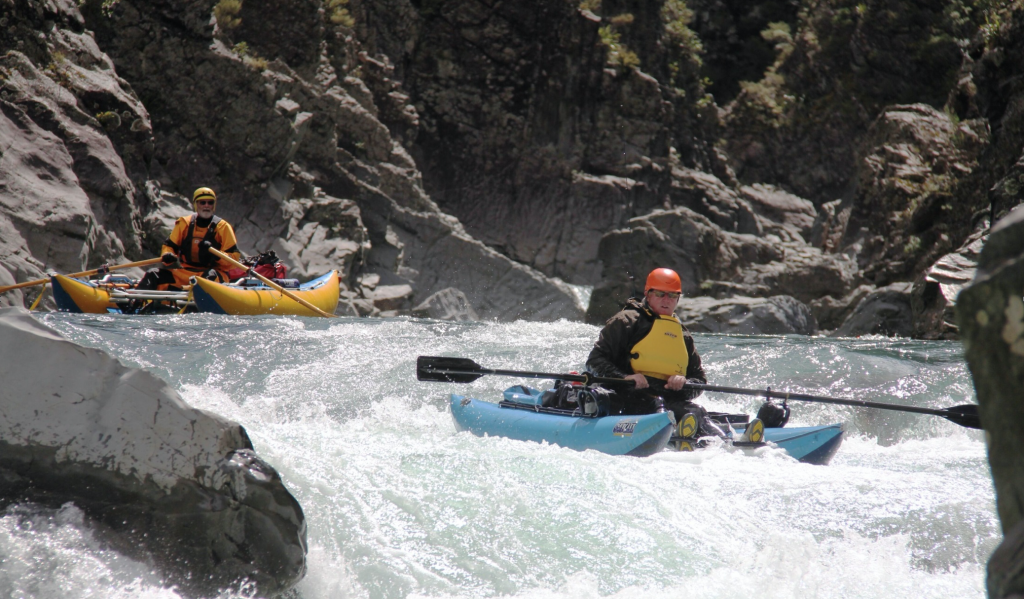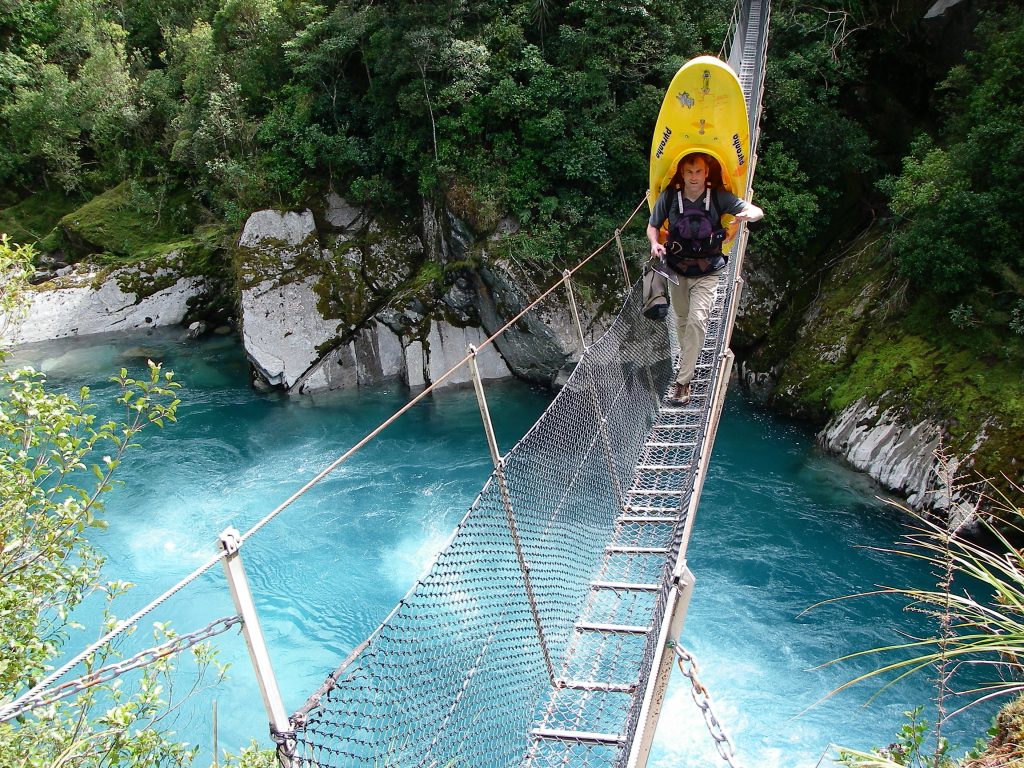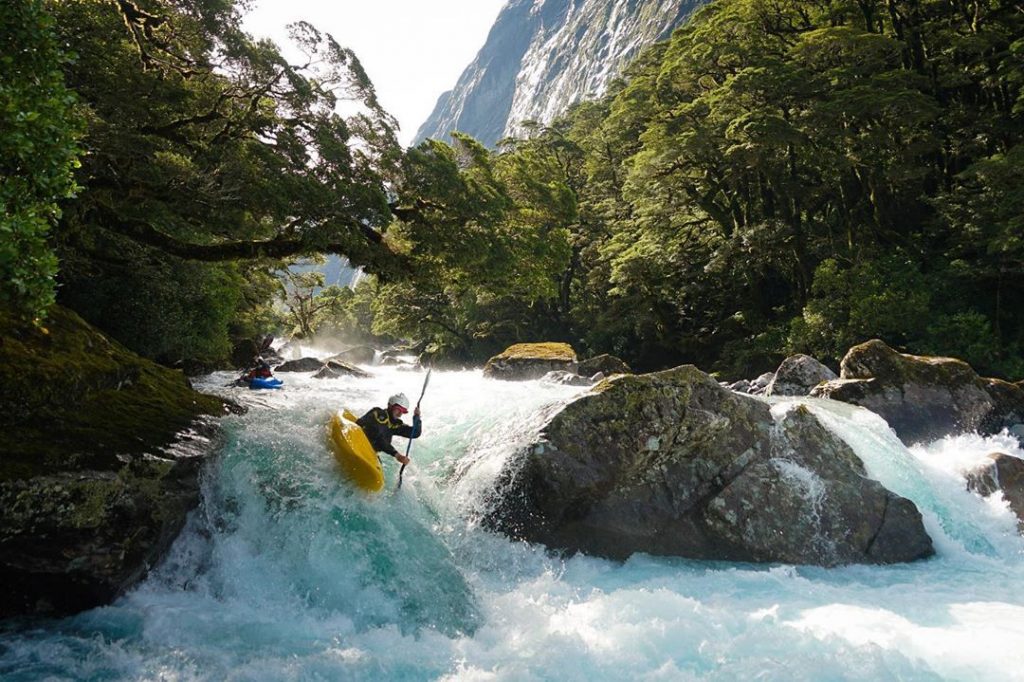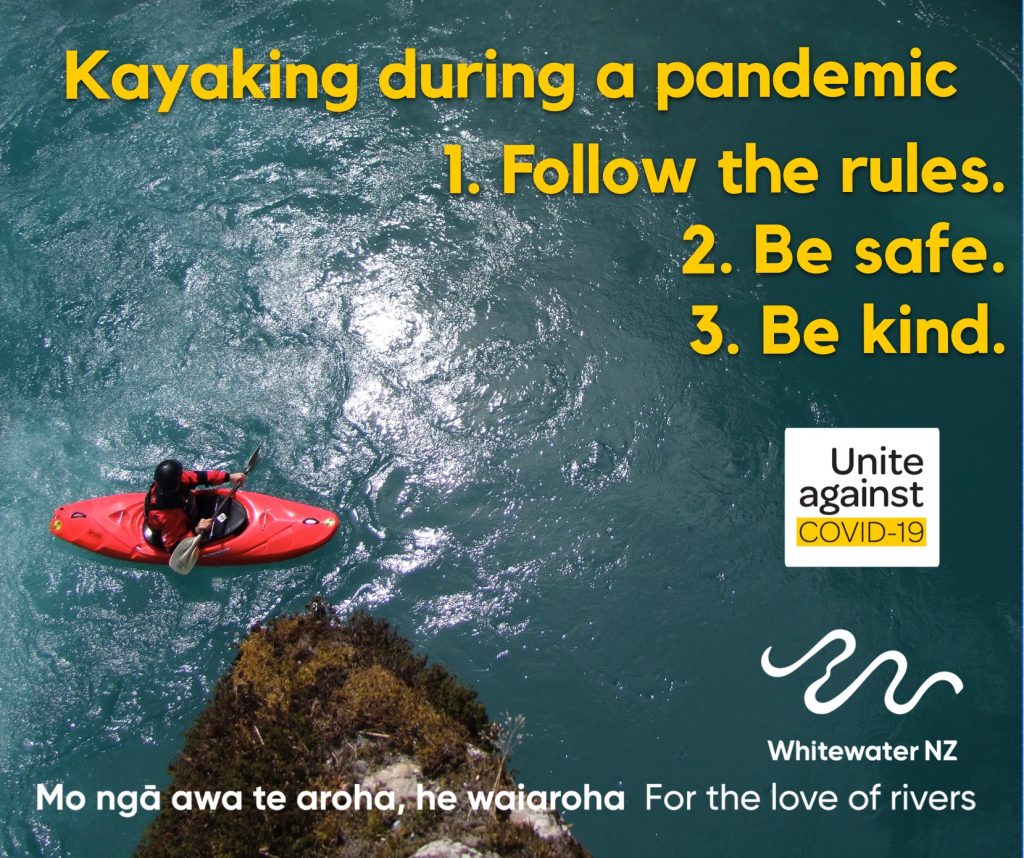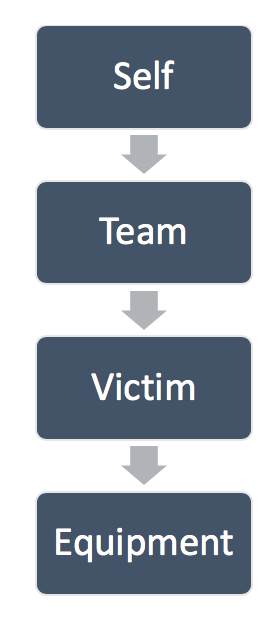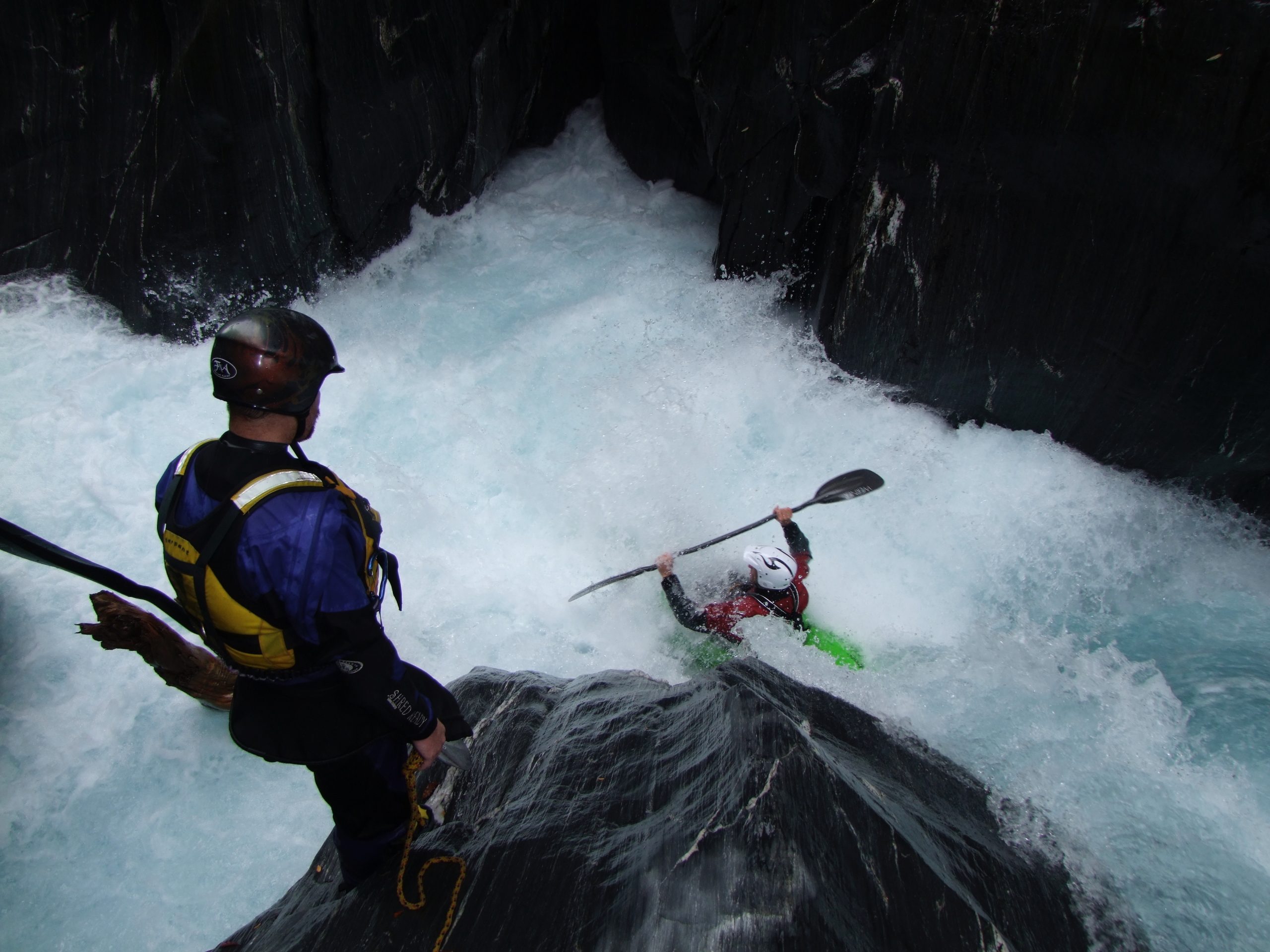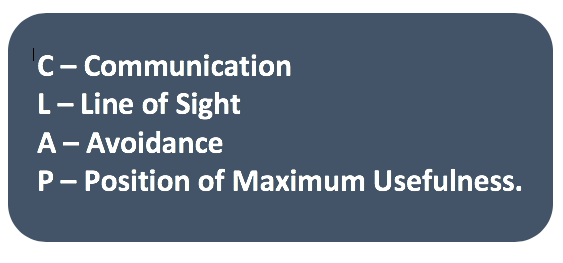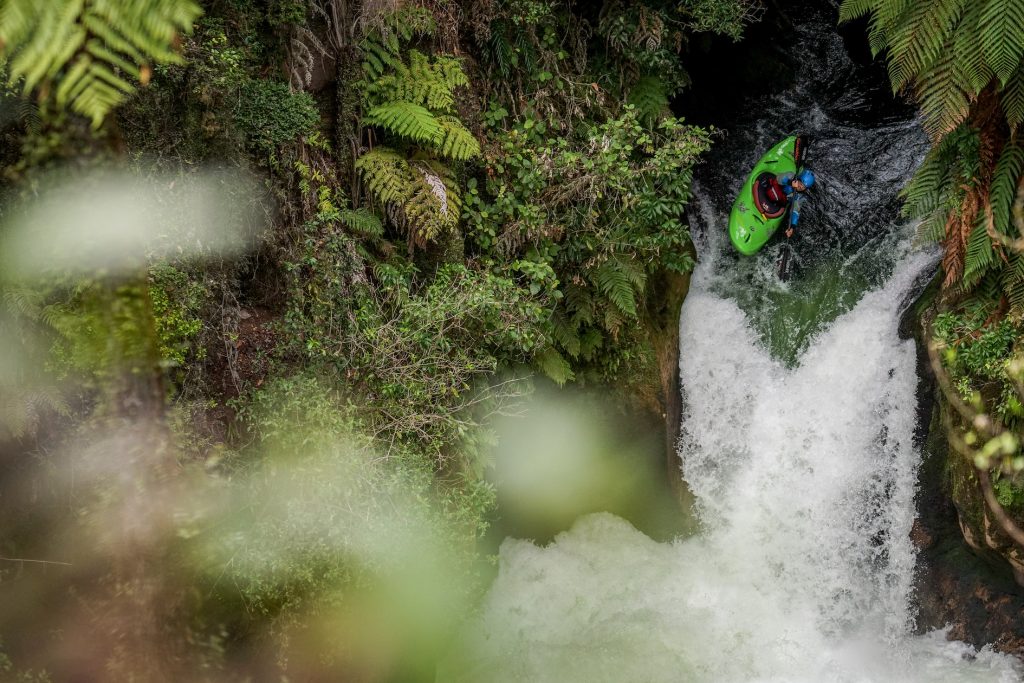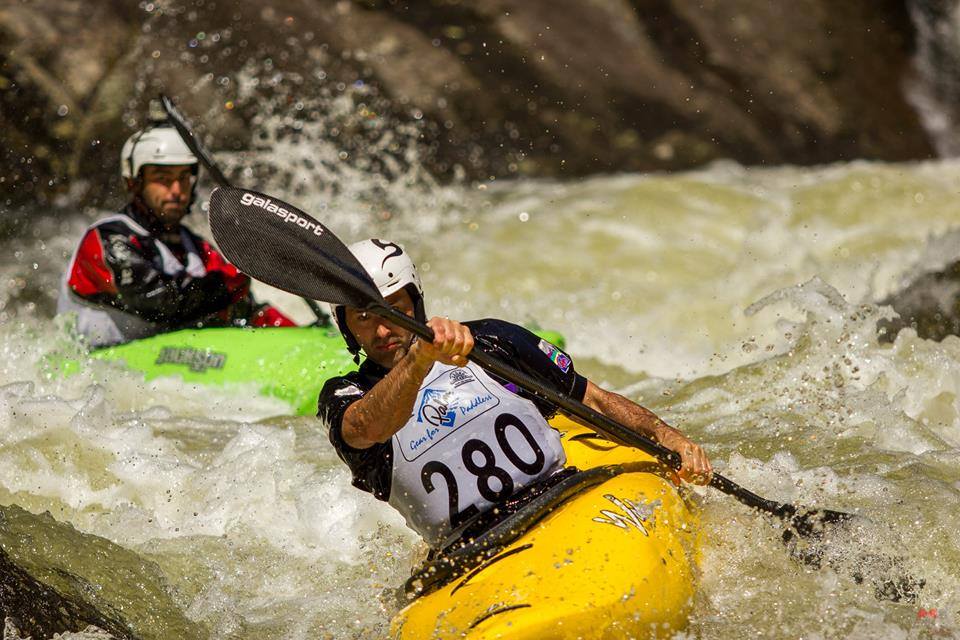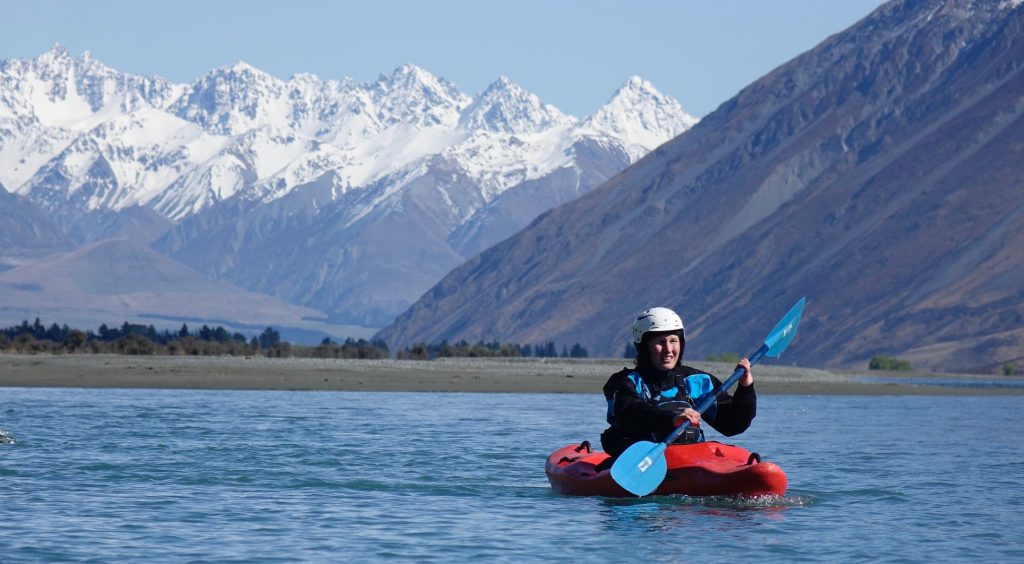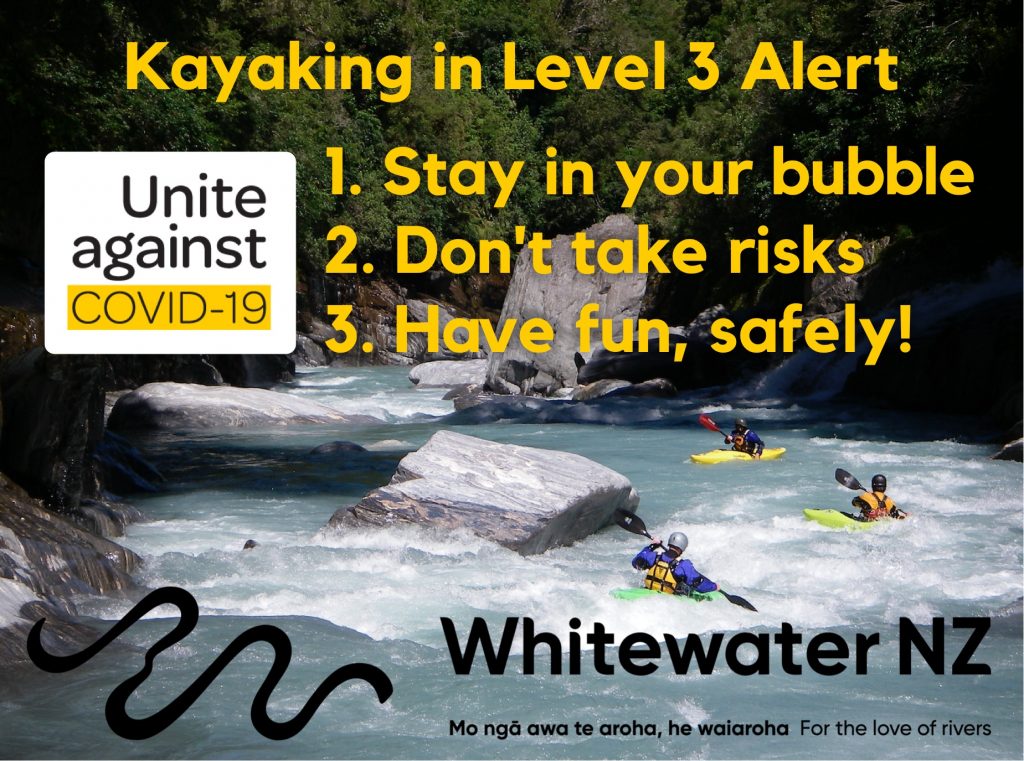
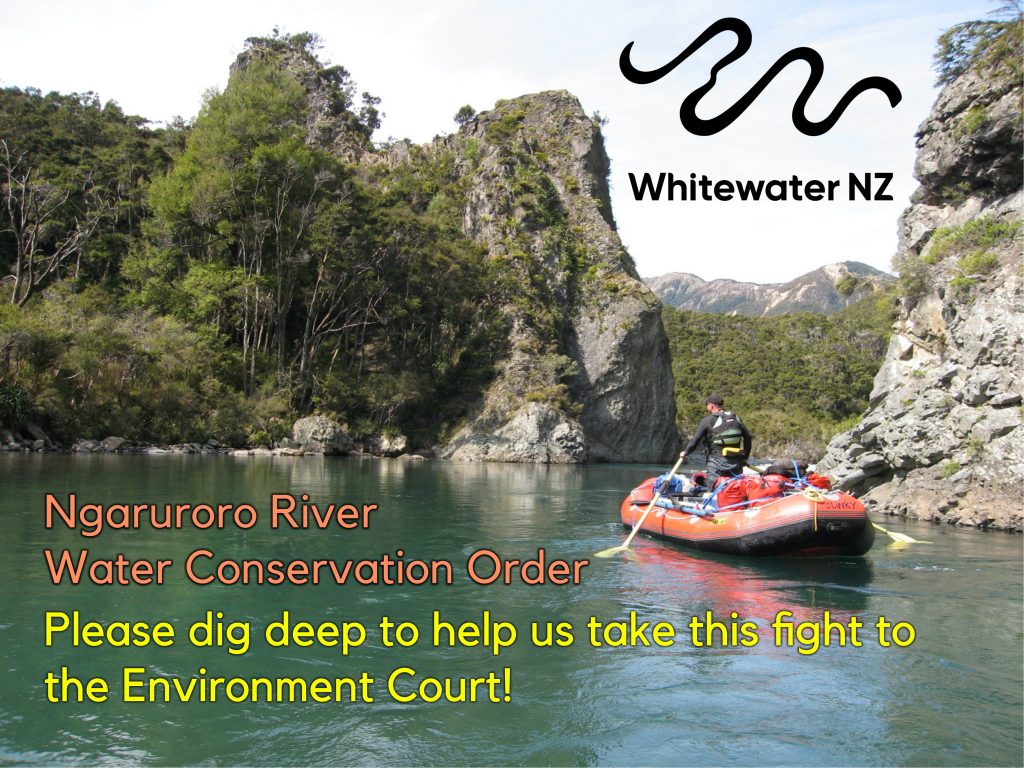
Please donate here.
After years of tireless efforts from Whitewater New Zealand and others, a Special Tribunal recommended that the Ngaruroro River in Hawkes Bay be protected by a Water Conservation Order (WCO). For those that aren’t familiar with WCO’s, this is the highest level of protection that a river can get in NZ and is meant to give everlasting protection to ensure a valley remains wild and free. River people, including kayakers, rafters, canoeists, packrafters, fly fishers, trampers, hunters, bird spotters, and conservationists from across the Country celebrated this decision. However, WWNZ’s lawyers took a closer look at the wording within the proposed Order and found that it didn’t really offer any protection at all! They were proposing to allow water abstraction from tributaries, there was no solid definition of such basic terms as damming, no controls on water contamination and it left the door wide open for developers to challenge it in the future.
WWNZ have appealed the original draft WCO (link is here) and proposed a new draft (link is here). We’re taking this fight to the Environment Court, so if you care about the future of whitewater and rivers in NZ please dig deep in your pockets and make a donation to help with our Court costs. Future generations deserve to experience wild and free rivers in NZ and we’re trying our best to provide the protection that our wild places deserve. Please help us.
We’ve started a “give-a-little” campaign so you can donate to this cause and help us keep this special river wild and free:
https://givealittle.co.nz/cause/ngaruroro-river-water-conservation-order
If you’d like to know more about the fight so far, read on!
Late in 2015 Whitewater NZ, along with the Zealand Fish and Game Council, Hawke’s Bay Fish and Game Council, Operation Patiki Ngāti Hori ki Kohupatiki, the Royal Forest and Bird Society of New Zealand and Jet Boating New Zealand, lodged an application for a Water Conservation Order (WCO) on the Ngaruroro River in Hawke’s Bay. The New Zealand Rivers Association (the professional body for rafters in New Zealand) also supported the application. Whitewater NZ particularly wanted to preserve the outstanding white water kayaking and rafting amenity and wild, scenic and natural characteristics of the river above Whanawhana, where there are two stunning multi-day white water runs in the upper river. This was part of Whitewater NZ’s on-going conservation strategy on behalf of paddlers throughout the country to help preserve some of the best white water runs in New Zealand for the future. The application and our conservation effort were strongly supported, and especially financially, by the Hawke’s Bay Canoe Club.
Hearings before a Special Tribunal were held for the river in two stages in 2017-18. Whitewater NZ presented its case as did clubs and paddlers from throughout New Zealand who submitted in support of the application. A draft WCO was recommended by the Special Tribunal in August 2019. The outstanding white water amenity and wild and scenic river values above Whanawhana were recognised in the draft WCO, with no damming on the mainstem but damming possible on tributaries. The outstanding jet boating, iwi and bird values in the river below Whanawhana were not recognised by the WCO.
The wording in the WCO designed to protect our values was very ambiguous and open to interpretation, permitting activities so long as their impacts were no more than minor. This could mean that any future applications for water takes in the tributaries and headwaters and dams for water storage could severely affect flows in reaches of the river down to Whanawhana. This would not retain the flows and river processes that provide for our values, and we would have to defend the WCO whenever such situations arose. In effect, the WCO recognised our values but did not protect them at all in a meaningful way. This decision used language that would also set a very poor precedent for future WCOs.
As a result, Whitewater NZ decided to appeal this decision to the Environment Court seeking better clarity around protection of our white water values, and especially no damming provisions on the headwater tributaries and meaningful protection of water quality in the river, which is a key feature of the upper river runs. Other parties, such as the Hawke’s Bay Regional Council, the NZ Winegrowers Association, NZ Beef and Lamb, Pernod Ricard (Multinational liquor manufacturer who profit from wine in Hawkes Bay) Federated Farmers and other development groups also appealed the decision, seeking to further weaken the Order and leave no restrictions on damming and water storage on the headwater tributaries.
Whitewater NZ have so far undertaken mediation facilitated by the Environment Court to see if the matters could be resolved without a full Environment Court Hearing. This was largely unsuccessful largely due to the opposition of the agricultural sector and the HBRC. We are continuing to work towards resolving a number of issues, including with local tangata whenua, who also object to the imposition of a WCO. Much of the land on the true right bank in the upper river run down to Kuripapango is Maori Trust land (the rest is administered by the Department of Conservation (DoC)) and tangata whenua want to be the primary custodians to control this land and look after it and the river as kaitiaki (guardians). The Trusts already have a number of kawenata (land administration agreements) with DoC to look after and conserve their lands. We are developing a relationship with these Trusts to collectively look after the river.
We now need to raise $35,000 to fund our appeal in the Environment Court. The Court date has been set down for early February. In the past we have been very fortunate to have the support of Fish and Game in such processes, but for various internal reasons they have withdrawn from the appeal. Forest and Bird have appealed the decision as it affects their values on the lower river, and also support us in the upper river as they have interests in the whio (blue duck) and native fish populations in the upper river. Thus, we are largely on our own. The funds are needed to provide legal representation and legal submissions at the Hearing.
Thus, we are launching a fund-raising appeal to the wider kayaking and rafting community to support the Environment Court appeal. We would be most grateful to receive donations to the fund. Should the appeal not go ahead we would offer to return any donated funds should parties want that or retain the funds for other conservation work carried out by Whitewater NZ if you were happy with that. Please support us strongly in this matter if you are able. The chance to get WCOs on rivers only happens occasionally in New Zealand. The processes required to get them are long and expensive. Fish and Game would have spent about $750,000 so far on the Ngaruroro WCO. It would be great to complete this process and get a meaningful defensible WCO granted on the river after all our collective efforts.
Please dig deep and help us to help keep this majestic river wild and free.
https://givealittle.co.nz/cause/ngaruroro-river-water-conservation-order
